Capsicum is a genus of plants from the nightshade family, numbering many varieties that differ not only in their appearance, but also in taste. All varieties of vegetable culture are conventionally divided by taste into 2 broad groups: sweet and bitter. Bitter varieties are actively used in cooking to add spice and piquancy to dishes.
Despite belonging to different varietal groups, cayenne pepper and chili are quite similar to each other, so it is difficult for an uninitiated person to determine what the difference between them is. However, an experienced vegetable grower can easily distinguish these varieties, based on their botanical characteristics and degree of burning.
Content
The difference between cayenne pepper and chili
Most people all kinds of hot peppers are mistakenly called "chili." However, all varieties of bitter vegetable crops differ among themselves in their appearance, ripening speed and degree of severity.
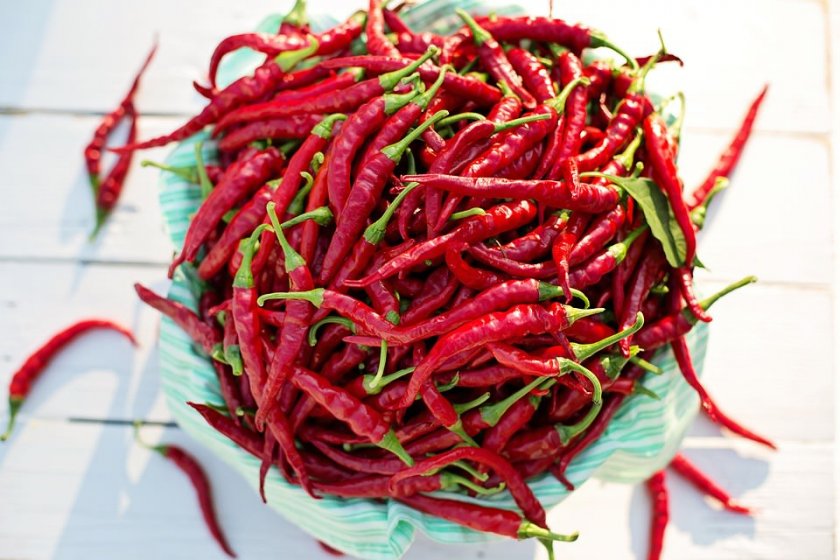
Botanical characteristics
The Cayenne variety belongs to the species Capsicum frutescens or a separate group of Capsicum sinense, according to various sources.
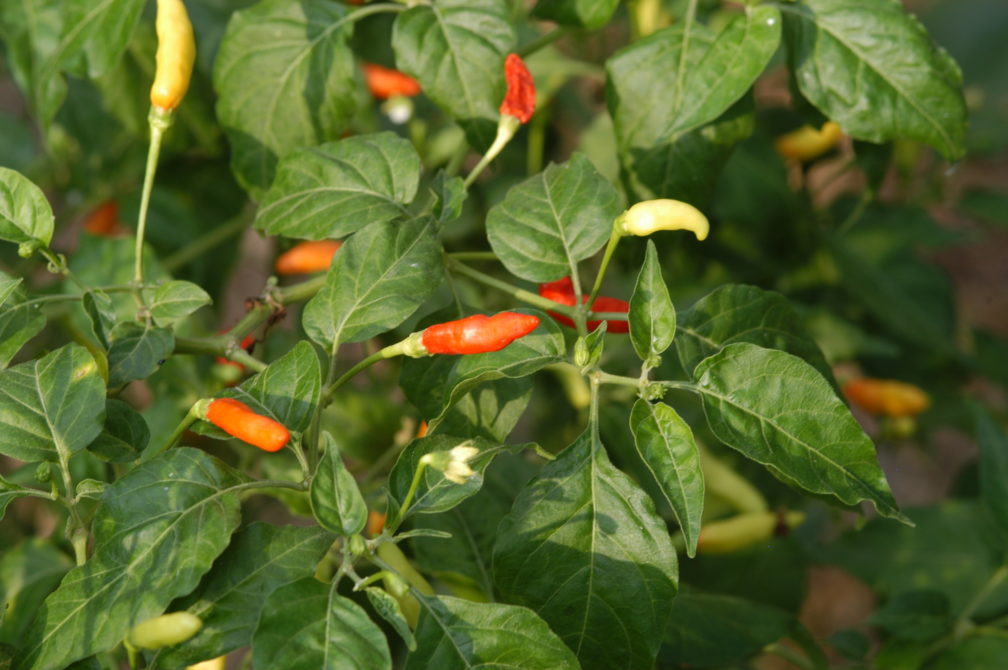
Chile, in turn, is a representative of the species Capsicum anuum, which is synonymous with the species Capsicum frutescens. Despite a misconception, the vegetable was not named after a country in South America. In fact, the plant was called the Aztecs, from the language of which "chili" is translated as "red". It is in this color that the fruits of most varieties are painted, in the degree of biological maturity.
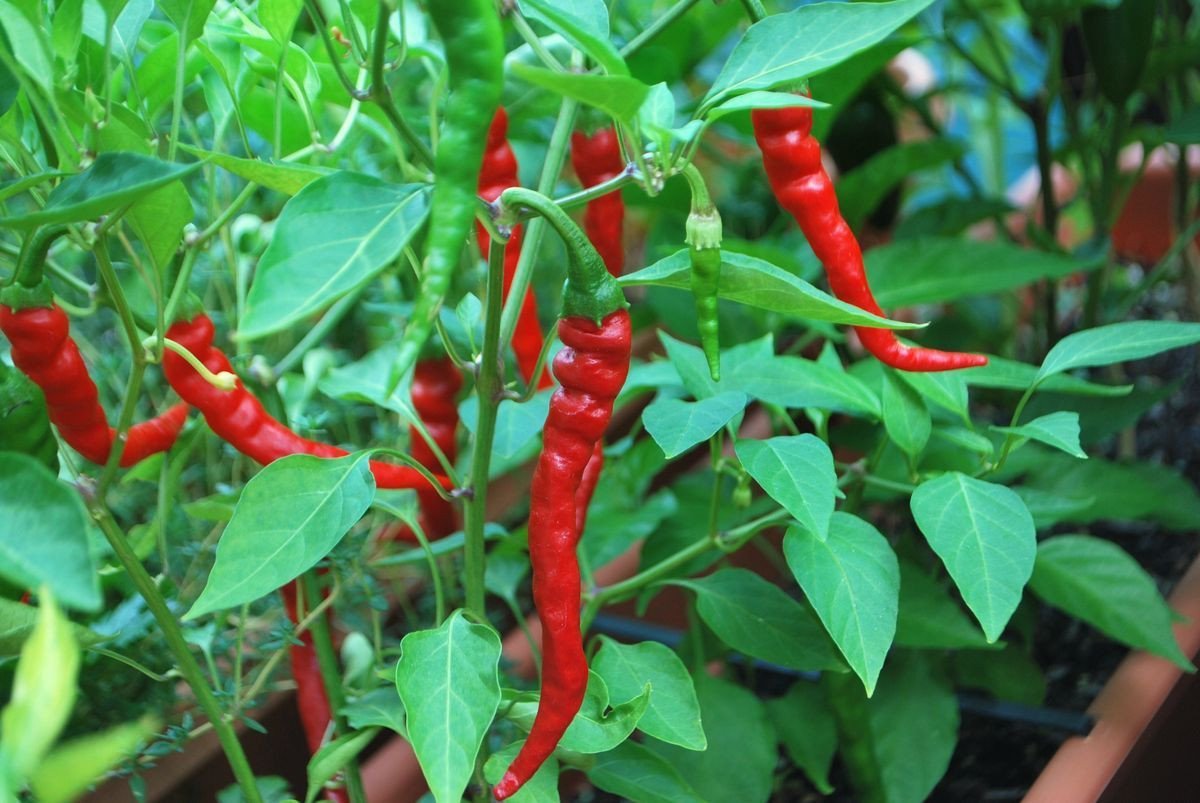
The morphological characteristics of all varieties are quite similar, the choice also complicates the wide variety of the genus. According to botanical characteristics, all varieties of burning culture almost identical to each other. However, it is believed that the fruits of the Cayenne variety are small in size, sometimes they do not exceed the size of the beans.
Taste Features
Different varieties of plants differ not only in morphological characteristics, but also in taste. The severity of the vegetable depends on the amount of capsaicin alkaloid in its composition. It is capsaicin that is used in the production of pepper spray and some medications.
To determine the severity of the fruits, the American chemist W. Scoville developed a burning scale, which clearly shows the relationship between the content of capsaicin in the vegetable and its severity. For example, the degree of indication of the sharpness of bell pepper is –0, and the burning ability of fruits of the species Capsicum anuum fluctuates within 30-50 thousand units of the scale.
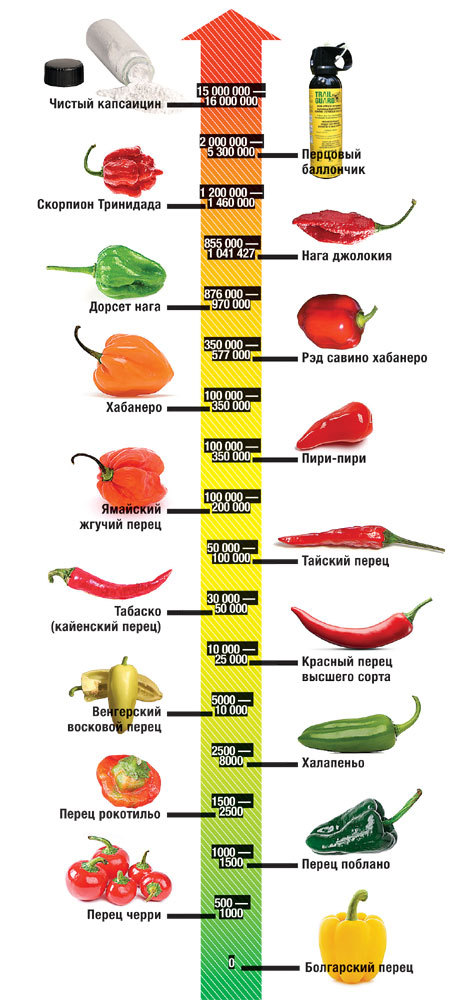
Despite the existence of a scale that has been substantially modernized over time, it is rather difficult to say which kind of vegetable is more burning. This is due to the fact that the severity of the fruit of the plant depends on the place of its cultivation and the characteristics of each individual variety. However, there is an opinion that high-quality pepper, named after the port city, is much sharper than chili.
Useful properties and application of cayenne pepper in medicine
Recently, a sharp vegetable is often used in folk medicine to treat many diseases and pathological conditions. Useful properties of the product lie in its ability to have an immunostimulating and tonic effect on the body.
Structure
The healing properties of the fruits of the plant are explained by their composition. A vegetable contains many biologically active substances, including:
- proteins;
- carbohydrates;
- capsaicin;
- minerals (potassium, magnesium, iron, phosphorus, zinc, etc.);
- vitamin C;
- vitamins A, K, PP and group B;
- essential oils;
- fatty acid;
- essential amino acids;
- carotenoids;
- hafitsin;
- alimentary fiber;
- ash;
- sulfur;
- water.
The product is rich in vitamin C, due to which its use strengthens the immune system and increases the body's resistance to colds. According to studies, pepper contains many times more ascorbic acid than citrus. In addition, the warming effect of the vegetable is used to treat acute respiratory infections or flu.
Capsaicin, a substance that gives bitterness to the product, is especially beneficial for men because it not only tones the nervous system, but also boosts male libido. Due to the sulfur content, the use of fruits has a beneficial effect on the condition of the skin and hair, so they are often used in cosmetology.
Pepper Treats
Vegetable is often used for the treatment and prevention of colds. To prepare a cold medicine, you need to take:
- Milk - 1 tbsp.
- Pepper (ground) - 1 pinch.
- Ginger (in the form of powder) - ½ tsp.
- Butter - ½ tsp
- Honey to taste.

With the help of spices, medicinal oil for external use is prepared, which is effective for colds, flu, rheumatism and radiculitis. To do this, just take a few drops of any vegetable oil and on the tip of a knife ground red pepper. The resulting product is applied to a problem area of the body and covered with a cloth or towel. With a cold, oil acts like mustard plasters. The main thing is not to overdo it with the amount of spice, as this can lead to a burn.
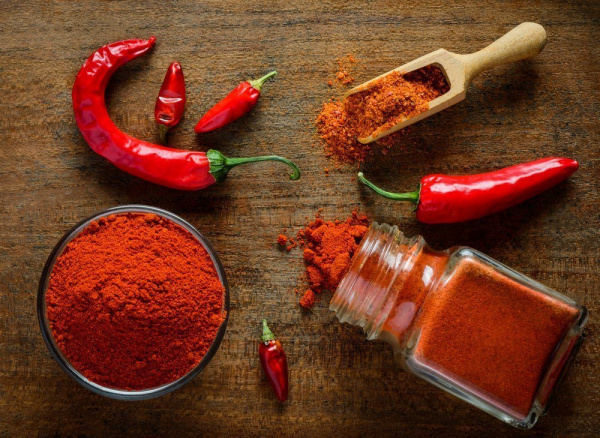 You may be interested in:
You may be interested in:Cooking use
Hot peppers are one of the most popular seasonings used in modern cooking. Using it, you can give any dish a spicy pungency and freshness. In addition, the spice is often used as a natural preservative. Use the product in fresh or dried form. Dried and powdered vegetables are added to salads, soups, main dishes, sauces and marinades.
Almost any dish can be seasoned with a burning vegetable; it perfectly complements the taste of meat, fish and seafood. Most often, the bitter fruit can be found in dishes of Mexican and Thai cuisine. The product goes well with basil, garlic, coriander and other spices, so it is a component of many combined seasonings.
Spice is also used in the preparation of confectionery. It is added to chocolate fillings and directly to chocolate for a brighter and more aromatic taste. Spice is successfully added to coffee, making it tart and roasting.
However, when adding spices to dishes or drinks, you should be careful to avoid discomfort and burns of the gastrointestinal mucous membranes. When cutting and peeling seeds of especially sharp fruits, it is recommended to wear gloves so as not to burn your fingers. Also, after using fresh fruits of the plant, do not touch the eyes before washing your hands.
Popular varieties of hot pepper
Currently, there are many varieties of plants that differ in the method of cultivation, the appearance of the fruit and the degree of burning. The following are especially popular:
- Double abundance. A hybrid variety characterized by high productivity and resistance to changing environmental conditions. The plant is a shrub with strong shoots about 80 cm high. Vegetables have a trunk-like shape and red color. The length of one fruit can reach 20 cm.
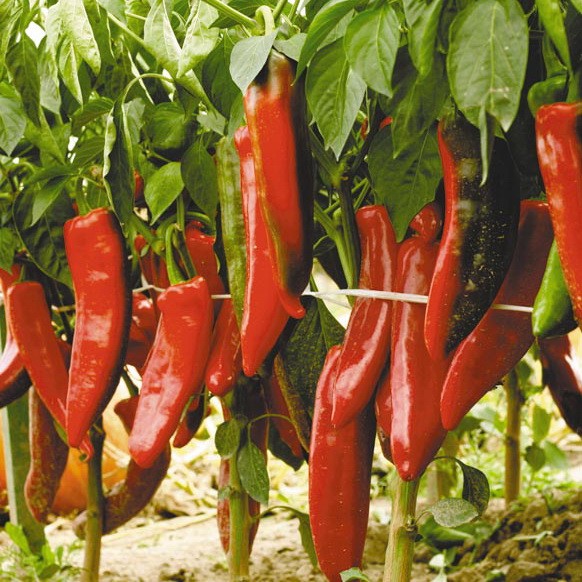
Double abundance - A burning bouquet. Early ripe variety with medium-sized fruits. Peppers up to 12 cm long appear on the undersized shrubs during fruiting. The pulp of the fruits, which have the shape of an elongated cone, is tolerably sharp. The plant tolerates drought with ease, but does not tolerate poor lighting.
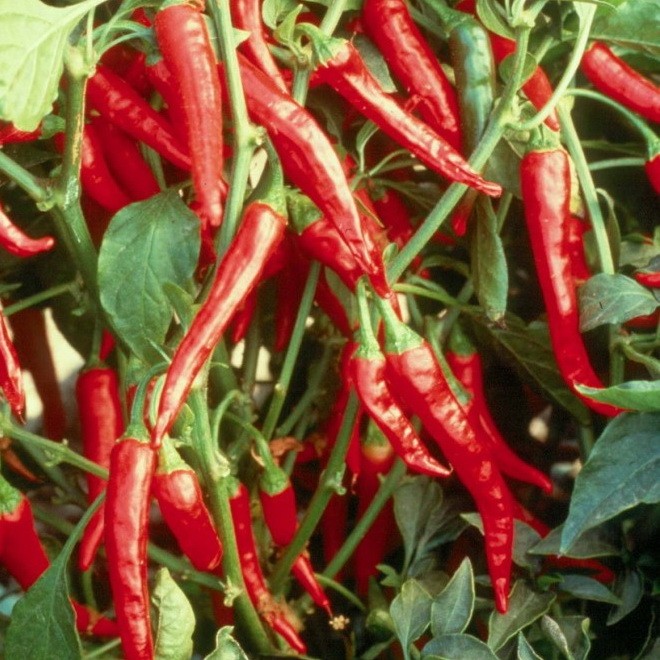
Burning bouquet - Adjika. The plant is a tall shrub, the shoot height of which can reach 1 m. Bright red fruits have a conical shape, quite burning in taste and have a pleasant aroma.
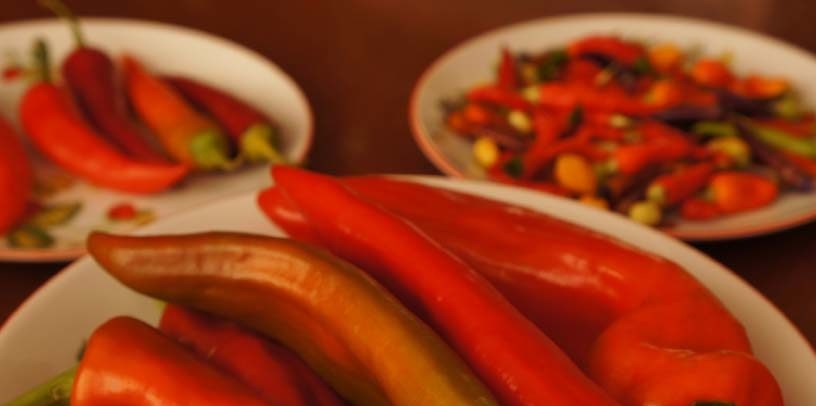
Adjika - Tabasco. Shrub with juicy and sharp fruits that grow in bunches on it. Small fruits of the plant are colored orange-red. Tabasco belongs to the high-yielding varieties resistant to various diseases.
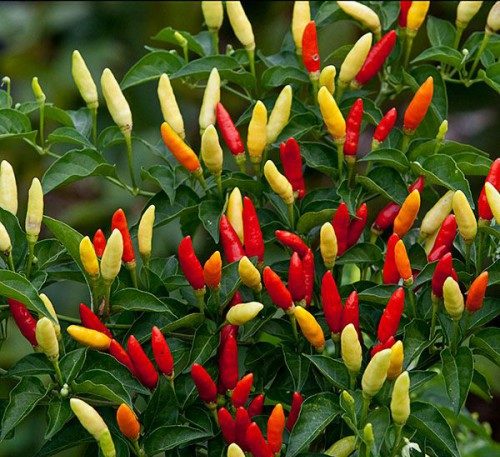
Tabasco - Twinkle. Mid-season variety suitable for outdoor cultivation. Small fruits are located on the bushes like bright red lanterns. Vegetables are distinguished by their special stinginess and strong pepper aroma.
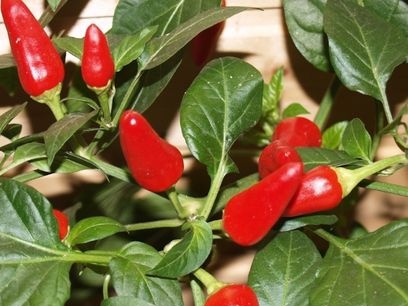
Twinkle - Chinese fire. An early fruiting shrub whose height barely reaches 65 cm. The plant is densely covered with leaves. It has quite large fruits, about 25 cm long, due to which it needs to be garter. It is considered one of the sharpest varieties of vegetable culture.
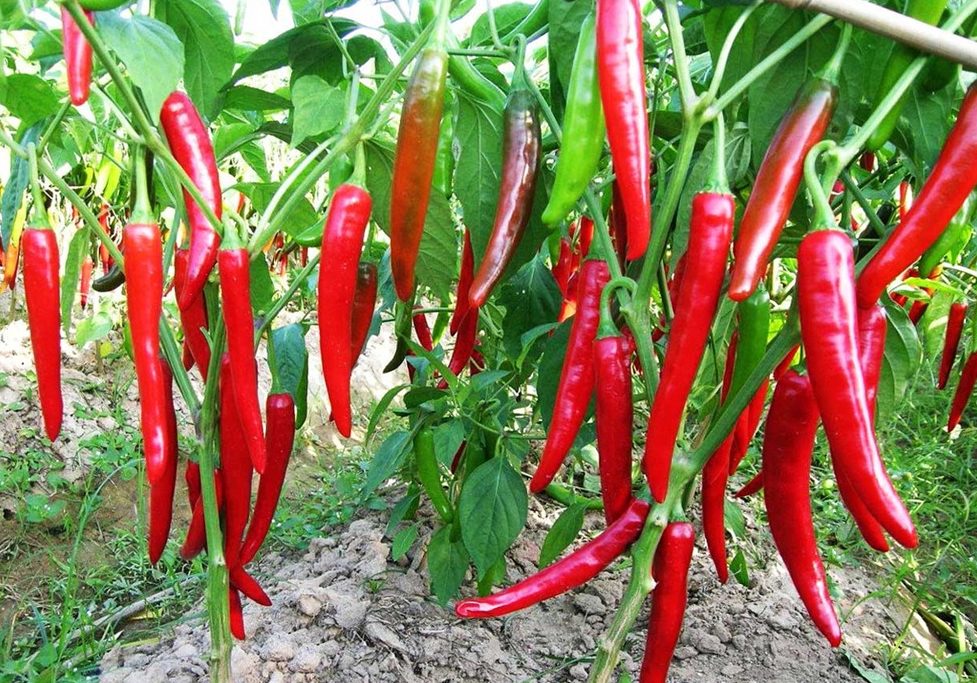
Chinese fire
Due to the great variety, each grower will be able to choose the most suitable variety for himself, based on his taste preferences and experience in growing crops.
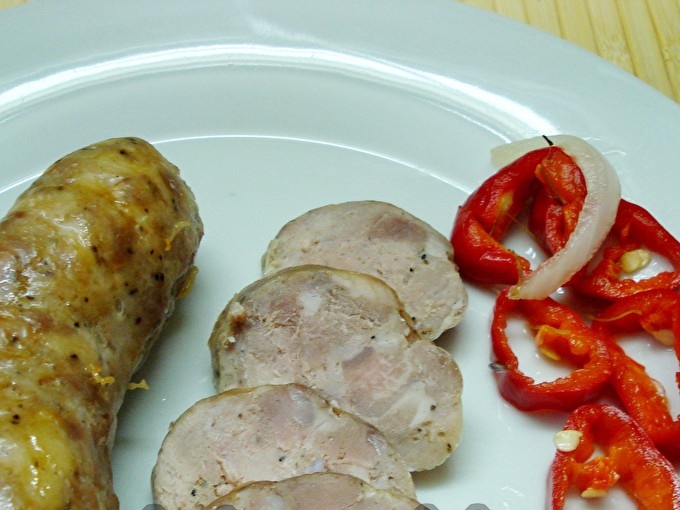 You may be interested in:
You may be interested in:Common Growing Questions
Chile is the common name for all varieties of hot peppers, under which any variety of plants can be sold, despite some differences between them.Cayenne pepper is a separate varietal group. However, these differences are not so significant, they are almost impossible to replace at first glance.




 Calorie pepper stuffed with meat and rice - BZHU per 100 grams
Calorie pepper stuffed with meat and rice - BZHU per 100 grams Gorky pepper - the best varieties for open ground
Gorky pepper - the best varieties for open ground Hot pepper seeds - the best varieties for open ground and reviews
Hot pepper seeds - the best varieties for open ground and reviews Capsicum tincture for hair - how to use and reviews
Capsicum tincture for hair - how to use and reviews